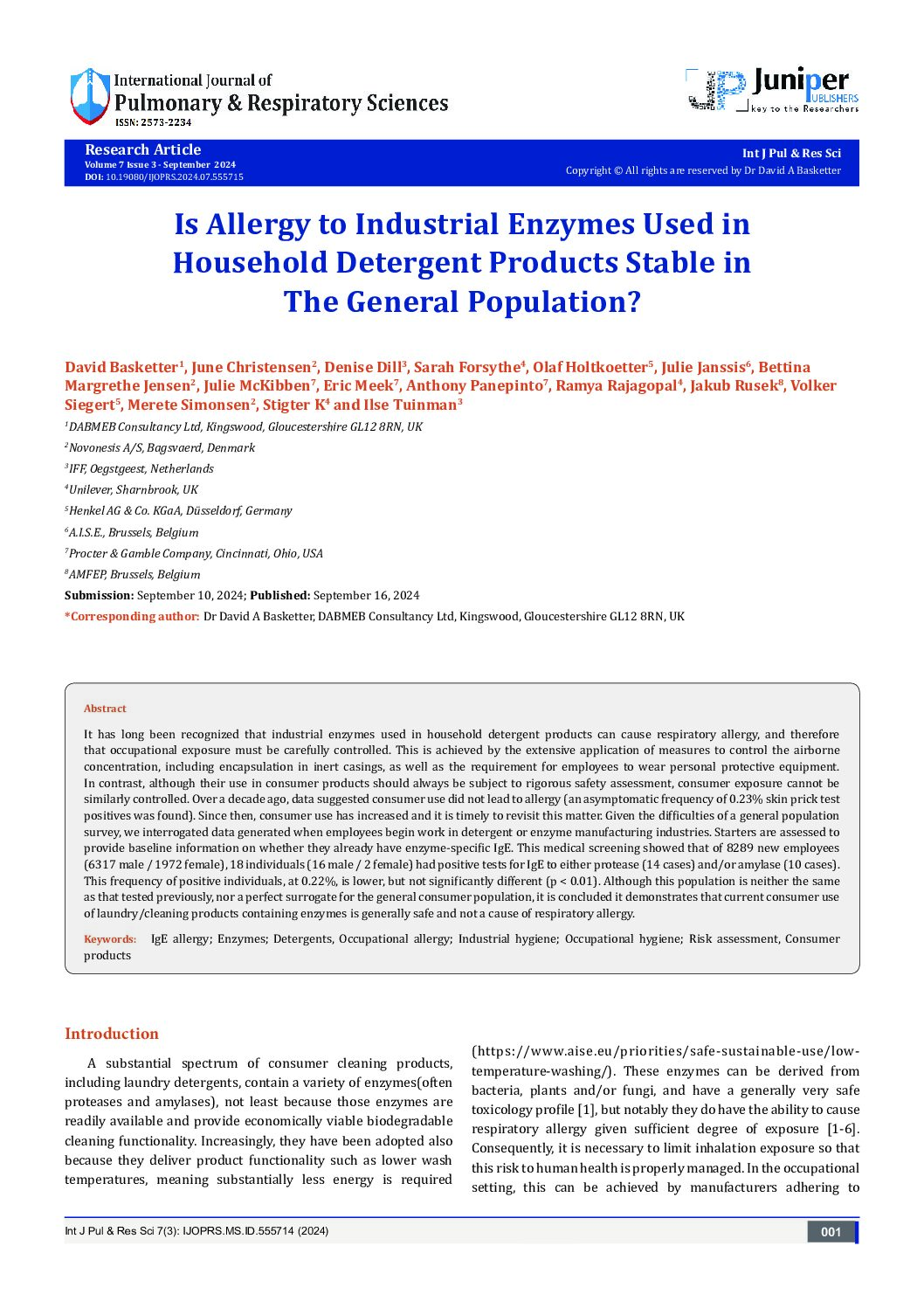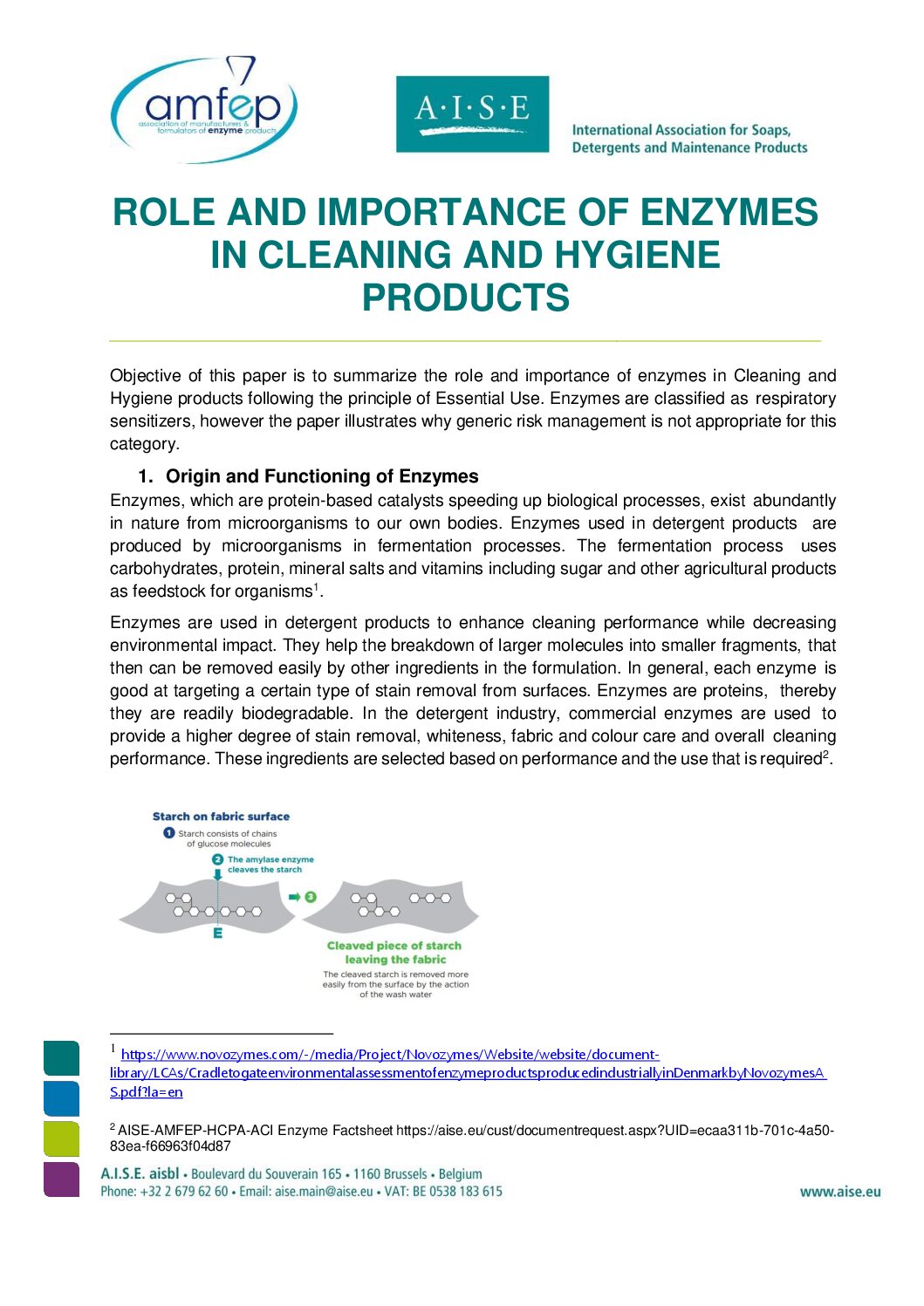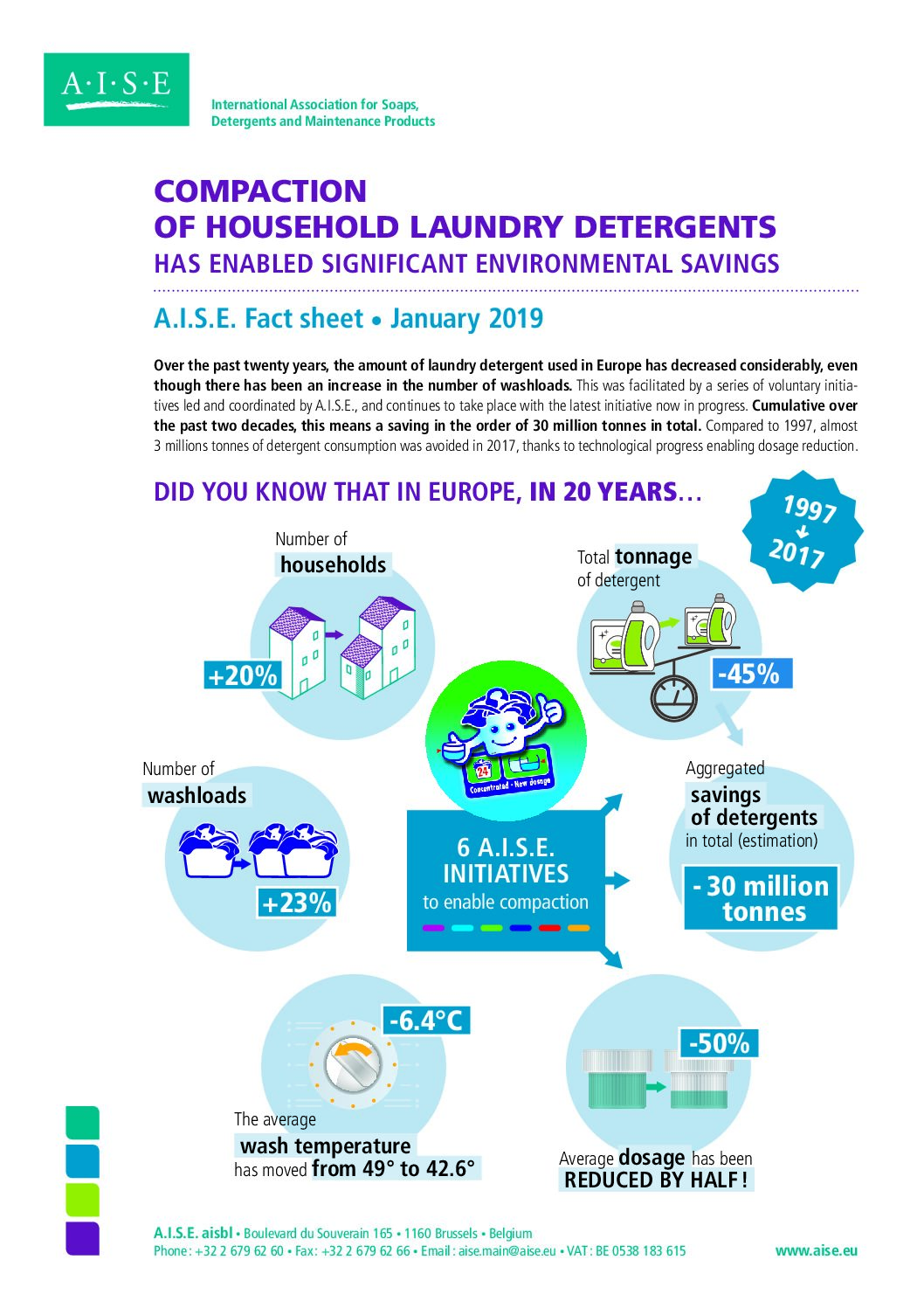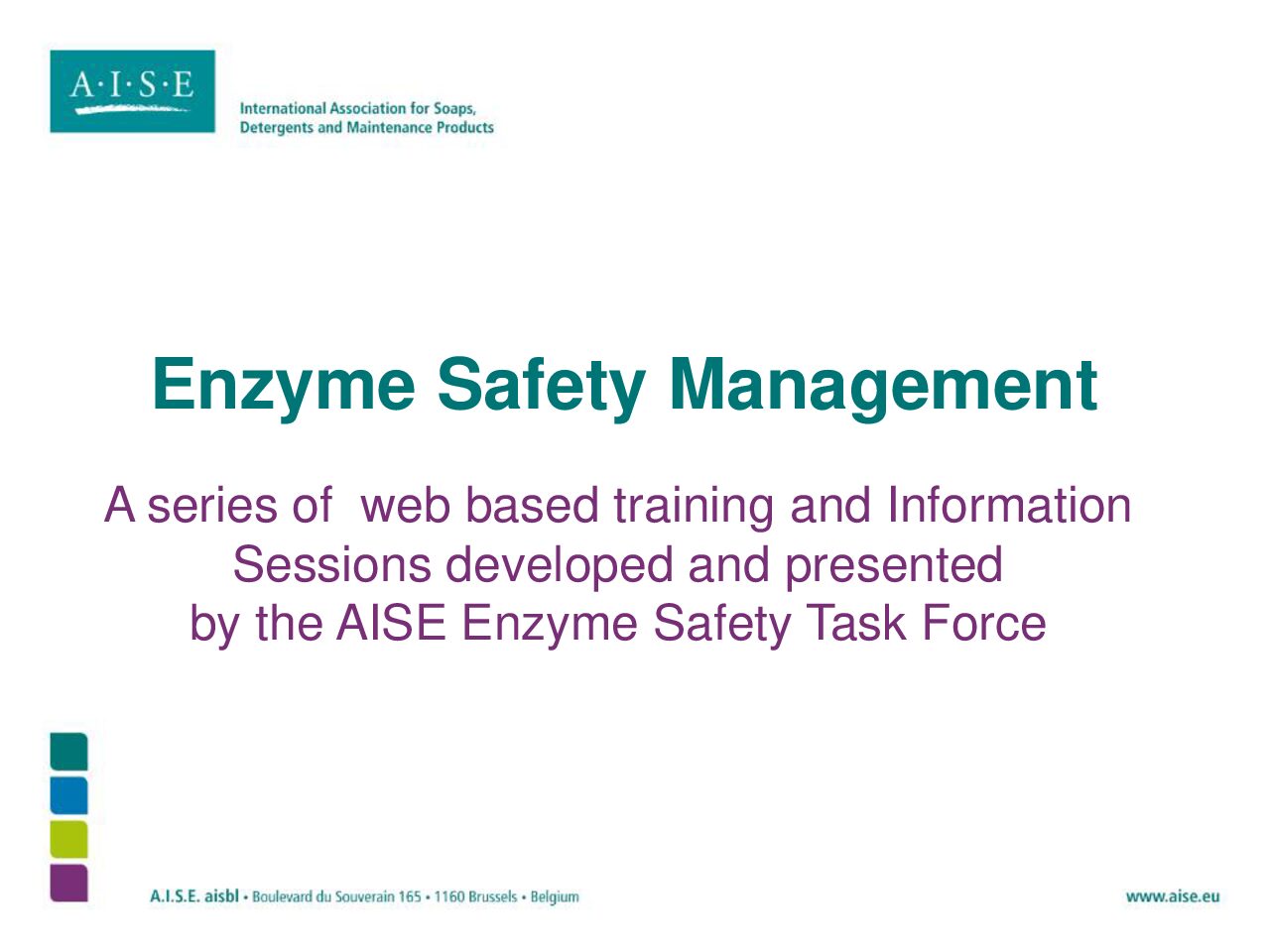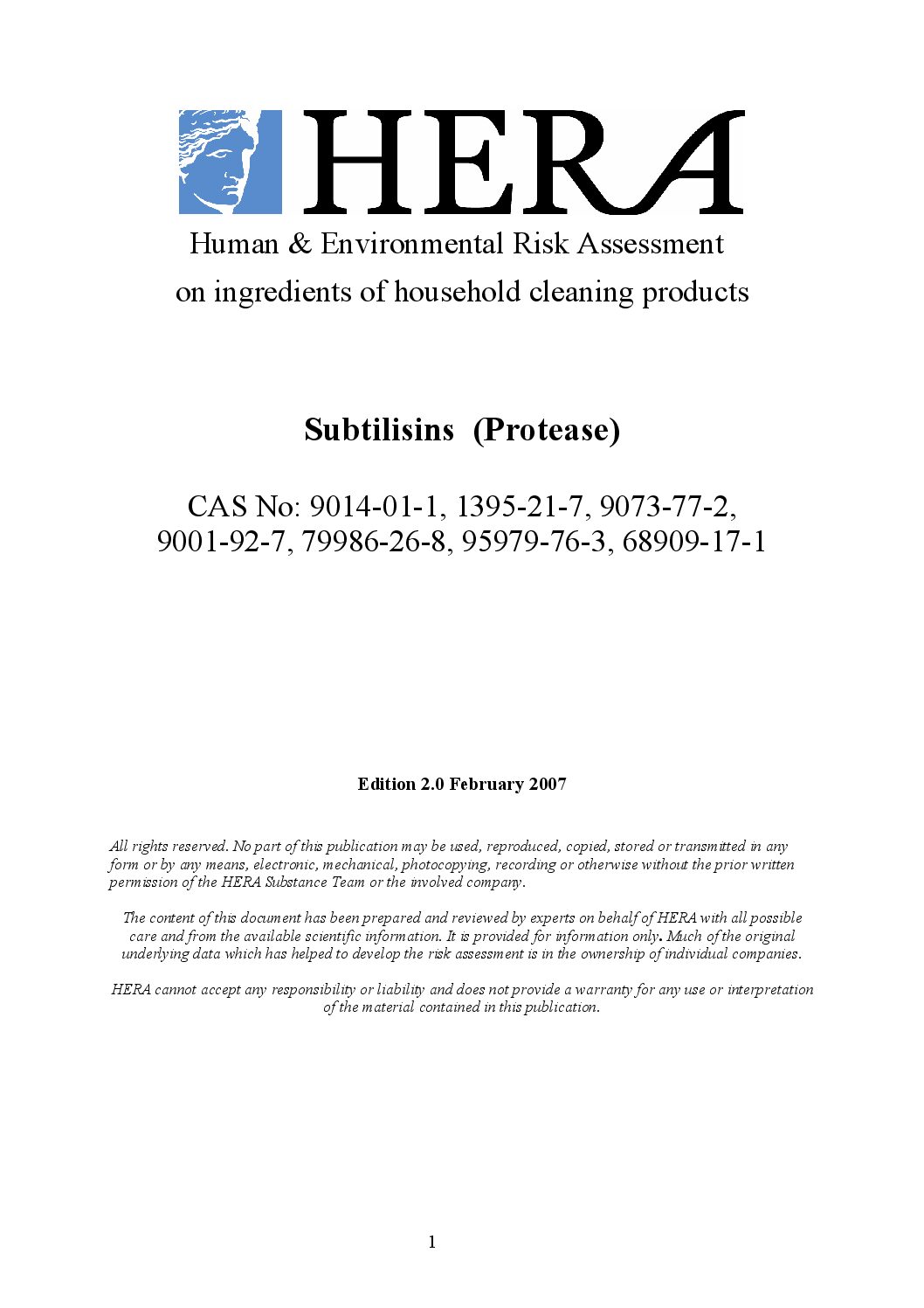Enzymes were introduced into cleaning products in the early 1960s and are widely used in modern day detergents for their versatility, safety and low environmental impact, as they enable a detergent to remove stains at low temperatures.
Enzymes correspond to protein molecules that act as catalysts to accelerate a biochemical reaction. In the detergent industry, they help the breakdown of larger molecules (present, for example, in a stain) into smaller fragments, which can easily be removed by other ingredients present in the detergents formulation. Due to these properties, commercial enzymes are used in detergent products to provide a higher degree of stain removal, whiteness, fabric and colour care and overall cleaning performance. Moreover, enzymes will remove stains at lower temperatures, which in turn minimises energy consumption linked to the cleaning process.

Safe handling of enzymes
Enzymes meet the needs of modern society for convenience without compromising health and safety. They have a long history of safe use in detergent products, and risk assessments are carried out as part of product development. Encapsulation of enzymes within a formulated product provides maximum safety for the user.
Safe handling procedures during manufacturing are part of the industry’s guidance to ensure minimal exposure. As with other chemical ingredients, the safe handling of enzymes during manufacturing is important because, if inhaled in their raw state, enzymes may cause respiratory allergy in the same way as other allergens such as pollen, house dust mites and animal dander.
A.I.S.E. has developed multiple tools to support companies in the safe use of enzymes. While primarily aimed at the detergent industry, the principles of the tools are generally applicable to enzyme-handling applications in other industries.
How enzymes are regulated in Europe
In Europe, enzymes are subject to the following legislation:
- Regulation (EC) No 1272/2008 on Classification, Labelling and Packaging (CLP) of substances and mixtures. CLP Annex VI currently includes a harmonised classification for the enzymes that are labelled as respiratory sensitisers. See also the ECHA factsheet on hazard classification of industrial enzymes
- Regulation (EC) No 1907/2006 on the Registration, Evaluation, and Authorisation of Chemicals (REACH). Enzymes need to be registered under REACH before they can be manufactured and/or imported into the EU in a volume above 1 ton per year.
Industry guidance for safe handling
The industry has developed guidance and other tools to ensure the safe handling of enzymes. This work has been done in collaboration with the Enzyme Manufacturers Association (AMFEP), as well as coordinated on a global basis with the American Cleaning Institute (ACI) and the Household and Commercial Products Association (HCPA). While primarily aimed at the detergent industry, the principles of the tools are generally applicable to other enzyme-handling occupations. The tools include
- Guidance on safe use
- Risk assessment guidelines
- Operational guidance for third parties
- Workplace posters on safe handling
- Training material
- Guidance for the Risk Assessment of Enzyme-Containing Products for Professional Cleaning – June 2024
Safe handling of enzymes – A.I.S.E. posters translations
English; Chinese; German; Italian; French; Japanese; Spanish; Portuguese; Dutch; Danish; Finnish; Arabic; Brazilian; Polish; Hindi; Russian; Indonesian
Enzymes have a strong sustainability profile
Stain removal is essential for a circular economy, and enzymes effectively eliminate stains allowing us to maintain and use textiles for longer periods.
Enzymes are effective in low concentrations and have been essential to the industry’s innovative development of the compact cleaning products we use today. Compact detergents minimise the use of water, packaging, energy and transport and are an inherent feature of detergents for professional use.

Enzymes perform stain removal at low temperatures, making them a key contributor to sustainable cleaning habits. A washing machine heating water is the most energy intensive phase of doing the laundry, but enzymes enable perfect washing results at a low temperature.
Useful links
Disclaimer
This information is provided free of charge and is based on technical data that the A.I.S.E./AMFEP participating member companies believe to be reliable. It is intended for use by persons having technical skills and at their own discretion and risk. Since conditions of use are outside our control, we make no warranties, express or implied, and assume no liability in connection with any use of this information. Nothing herein is to be taken as a license to operate under or a recommendation to infringe any patents.
Any use of the guidelines should make reference to the ownership by A.I.S.E./AMFEP. Translations are provided to facilitate the usage of this material worldwide and ensure the highest level possible of workers’ protection. However, each company using the guidelines should secure adequate translation. A.I.S.E./AMPFEP accepts no liability for such translations. Please note that in cases where some brands can be recognised in the images, those are included only as illustrative examples and A.I.S.E./AMFEP do not recommend any brand in particular.


